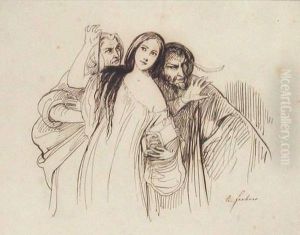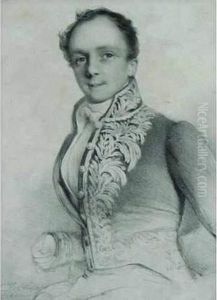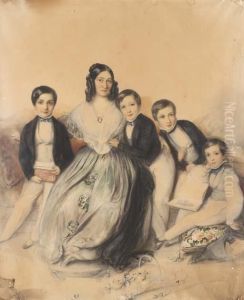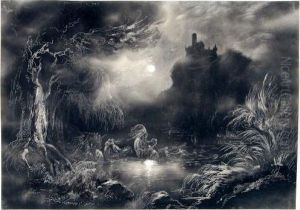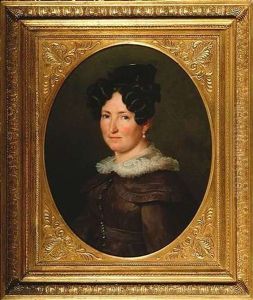Eduard Clemens Fechner Paintings
Eduard Clemens Fechner, not widely known as an artist, was actually a German physicist and philosopher and is more prominently recognized for his work in these fields rather than in the arts. Born on April 19, 1801, in Gross Särchen, Prussia (now Zarki Wielkie, Poland), Fechner pursued a diverse range of interests throughout his life, including the relationship between the physical and the spiritual worlds, which he explored through his philosophical studies.
Fechner's contributions to the field of psychology are particularly noteworthy. He is often credited with founding psychophysics, a discipline that explores the quantitative relationship between sensations and the stimuli that cause them. His most significant work in this area is 'Elemente der Psychophysik' (Elements of Psychophysics), published in 1860. This groundbreaking text laid down the principles for experimental aesthetics and had a lasting influence on psychology and philosophy.
While Fechner did have artistic interests, including writing satirical essays and composing poetry under the pseudonym 'Dr. Mises,' his legacy in the arts does not compare to his scientific and philosophical achievements. His work in psychology and philosophy continued until his death on November 18, 1887, in Leipzig, Germany.
Throughout his lifetime, Fechner's interdisciplinary approach paved the way for future research in the psychological aspects of perception, contributing to both the humanities and sciences. His ideas also influenced various philosophical movements and figures, such as William James, who is considered the father of American psychology. Although not an artist in the conventional sense, Fechner's intellectual curiosity and broad range of interests reflect the essence of a Renaissance man, bridging the gap between science and the humanities.
